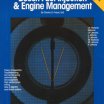Hmm.. det lyder lidt som dette??
Both of these issues are specific to air-cooled D-Jetronic applications (VW and Porsche)
* Lean Warm-up Mixture: VW and Porsche 2.0L applications suffer more from this problem than the 1.7L, which may be an oversight on the part of Bosch as to the additional fuel requirements of the 2.0L. For the first 10-15 minutes of operation, the value of TS2 is too low to provide a rich enough mixture for good operating characteristics. Symptoms include rough and/or low idle, surging under steady light throttle loads, and intake popping during over-run. The "old school" way to fix this problem was to add series ballast resistance to the TS2 sensor to richen the mixture. Unfortunately, the amount of correction required to get the mixture right is often greater than ~200 ohms. Addition of this much resistance causes the ECU to never sense that the car is fully warmed up, leading to mixture instability and poor running. The factory eventually recognized this problem, and developed a spacer to fit between the TS2 sensor and the cylinder head. This spacer delays the heating of the TS2 sensor, effectively enriching the mixture. Reproduction spacers can be obtained from Brad Mayeur (google him) or you can fabricate your own, with instructions on my parts page.
* Rich Warm Start Mixture: The symptom here is that after the car is fully warmed-up, you stop for 10-15 minutes to go into a store. When you return and try to start the car, it won't start until you open the throttle significantly, and the car runs poorly for the next few minutes after starting. If instead of waiting 10-15 minutes, you wait 30+ minutes, the car starts and runs without problem. This behavior is caused by the differential cooling rates of the aluminum heads and the cast iron cylinders and pistons. The heads cool much more quickly, so the value of TS2 increases in response, telling the ECU to deliver a richer mixture. However, the cylinders and pistons are still quite hot, and don't require such a rich mixture, causing poor starting. After the motor runs a few minutes, the heads heat back up and proper mixture is restored. If you wait 30+ minutes, both the cylinders and pistons cool off as much as the heads, and the car starts properly. To improve warm starting, try depressing the throttle BEFORE turning the key, to avoid spraying additional fuel into the intake, due to the action of the accelerator circuit traces in the throttle position sensor. Also note that the addition of a TS2 spacer on the 2.0L engines to fix the lean warm-up mixture problem described above, may make the warm start problem worse, as the TS2 sensor will cool even more rapidly.





